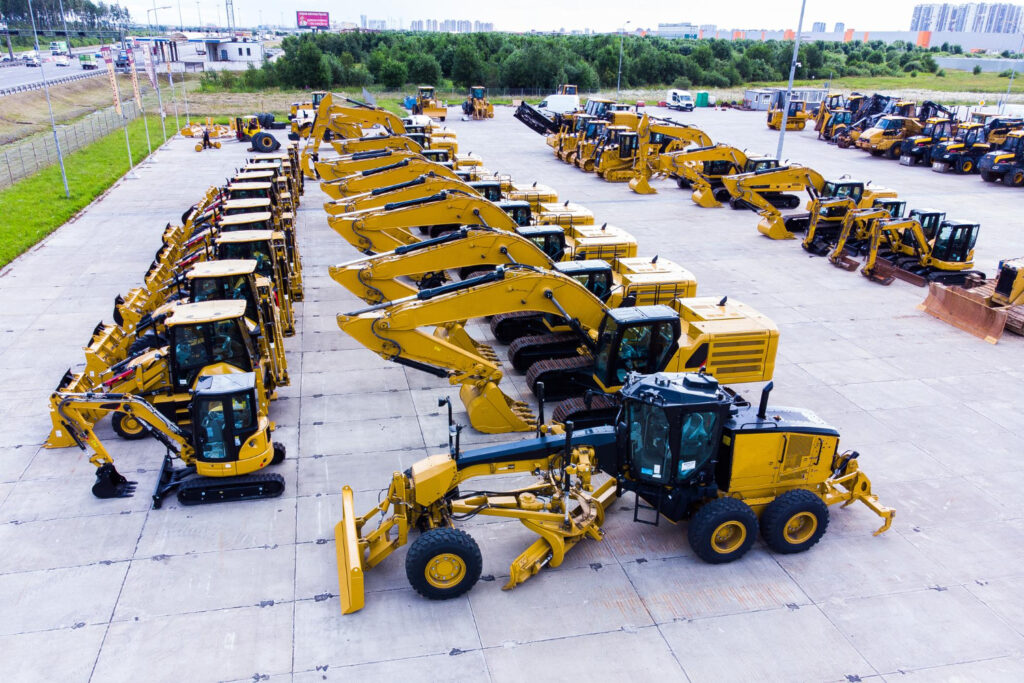Trends in energy management, the development of electric and hybrid vehicles, as well as innovations in fleet management and labor optimization are influencing manufacturers and operators of off-highway machinery. The application of modern solutions from these areas can significantly contribute to improving the energy efficiency of the entire off-highway sector.
Off-highway machinery designed for operation in difficult off-road conditions is widely used in sectors such as construction, agriculture, mining, and forestry, among others. The specific nature of the use of such equipment consumes significant amounts of fuel, generating both exhaust and noise emissions.
In the face of global environmental and sustainability challenges, the off-highway machinery industry is facing the need to adapt to new, more stringent energy efficiency standards. Technological developments and innovations are opening up new opportunities for equipment manufacturers, allowing them to reduce their environmental impact while increasing operational efficiency and lowering operating costs.
With the rapid development of the automotive industry, the availability of solutions to increase energy efficiency is increasing in the off-highway machinery sector as well. However, adaptation to new trends in this case is relatively slow. This is because the simple replication of a single solution for diverse off-highway vehicles is rarely applicable. The selection of the right technology depends on the design, weight, purpose, and use cases or duty cycles, as well as the power and torque requirements of individual machines.

However, there are already a number of solutions that can be used to deliver more energy-efficient off-highway vehicles. We have highlighted some of them below:
Manufacturers aren’t the only ones with a stake in improving the energy efficiency of off-road machines. The energy efficiency of equipment also depends on how it is used and other factors related to fleet management. On their way to reducing the carbon footprint of the equipment they use, users of off-highway machinery can benefit from the following solutions, for example:

The off-highway machinery industry is currently transforming, driven by the need for sustainability and technological innovation. For companies operating in this area, the ability to anticipate trends, flexibility in decision-making, and willingness to invest in new technologies are becoming crucial.
Growing environmental pressures are forcing the off-highway sector to take significant steps toward improving the energy efficiency of machinery. Increasing environmental awareness, supported by increasingly stringent emissions regulations, is opening up unique opportunities for manufacturers to transform the industry in a more sustainable direction. However, in transforming the off-highway industry, it is crucial not only to adapt the design of the solutions offered but also to educate operators and maintain high maintenance standards. The ultimate goal is to achieve harmony between energy efficiency and minimizing the environmental footprint of the entire sector.
Companies that take on the challenge of adapting to the new standards will not only meet market expectations but also contribute to a more sustainable future. These companies have the opportunity to shape the landscape of the entire off-highway sector, leading it toward more efficient and environmentally friendly machine operation.
If you are looking for support in designing energy-efficient off-highway machinery, we cordially invite you to learn more about our experience and expertise in this field and to contact us.
Car manufacturing has undergone constant change over the years to adapt to a changing world. The process of e volvement in the automotive sector is not stopping – there are constantly new challenges and circumstances that car manufacturers are trying to meet. The dynamic nature of this segment of the global market is perfectly illustrated by the changes that are taking place in the area of materials used in cars. One of the main trends we can observe is the desire to create vehicles based on lightweight yet durable components. There is also a strong emphasis on recyclates and renewable materials in the choice of materials for cars.
Read moreDue to its practical as well as aesthetic functions, the ‘grill’ is one of the vehicle components that receive special attention in terms of design. What does this process look like from the initial concept stage through to series production?
Read moreIntroducing a flawless product has always been a goal of all OEMs in the Automotive Industry. Unfortunately, product development has become more complex over the years. A growing number of suppliers involved creates a situation requiring checking if teams provide the correct elements of your final product. The purpose of ASPICE is to assess process steps and give tools to put a rating of your partners’ process development.
Read more